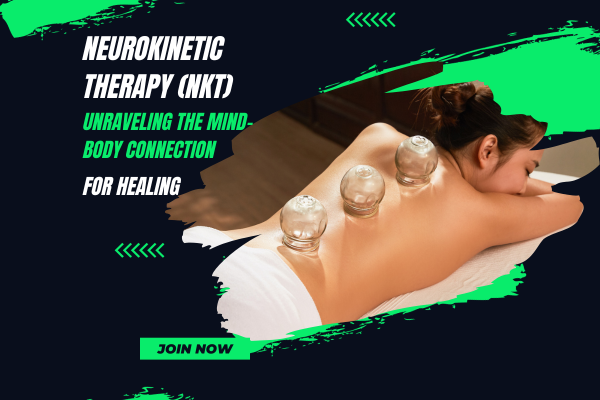Neurokinetic Therapy (NKT): Unraveling the Mind-Body Connection for Healing

Neurokinetic Therapy (NKT) represents a revolutionary approach to pain relief and rehabilitation.
Grounded in the understanding that the mind and body are intricately connected, NKT seeks to address the root causes of muscular dysfunction and pain.
In this comprehensive guide, we will explore the world of Neurokinetic Therapy, understanding its principles, benefits, and how it can be a transformative approach to healing and wellness.
Understanding Neurokinetic Therapy
Neurokinetic Therapy is a holistic therapeutic approach that acknowledges the interplay between the nervous system and muscular dysfunction.
It posits that the brain learns faulty movement patterns over time, leading to chronic pain, injuries, and muscular imbalances.
NKT practitioners use manual muscle testing to identify these patterns and restore proper movement through specific interventions.
The Benefits of Neurokinetic Therapy
- Pain Relief: NKT targets the root causes of pain, providing effective relief for conditions such as chronic back pain, neck pain, and muscle imbalances.
- Enhanced Movement: By addressing faulty movement patterns, NKT restores mobility and functionality, improving overall movement quality.
- Injury Prevention: NKT can identify and correct imbalances before they lead to injuries, making it a valuable tool for athletes and active individuals.
- Holistic Approach: NKT considers the mind-body connection, treating both the physical and neurological aspects of pain and dysfunction.
Key Principles of NKT
- Muscle Testing: Manual muscle testing helps identify weak or inhibited muscles and their relationships to dysfunctional movement patterns.
- Motor Control Patterns: NKT focuses on reprogramming the brain's motor control patterns to restore proper movement.
- Layered Compensation: NKT recognizes that the body often develops layered compensations to mask underlying issues, and it seeks to peel away these layers to uncover the root causes.
- Specific Corrective Exercises: NKT prescribes specific exercises and movements to retrain the brain and correct imbalances.
The Neurokinetic Therapy Process
- Assessment: A detailed evaluation of the client's history, movement patterns, and pain complaints.
- Muscle Testing: Manual muscle testing is used to identify inhibited or overactive muscles.
- Pattern Identification: The therapist identifies faulty motor control patterns and compensations.
- Treatment: Specific interventions, including massage, stretching, and corrective exercises, are applied to correct imbalances.
- Reassessment: The therapist reevaluates the client's progress and adjusts the treatment plan as needed.
Safety Considerations
NKT is generally safe, but it's essential to consult with a qualified NKT practitioner, physical therapist, or healthcare professional to ensure it's suitable for your specific condition.
NKT vs. Traditional Therapy
Let's compare NKT with traditional therapy approaches:
Neurokinetic Therapy
- Focuses on the root causes of pain and dysfunction.
- Incorporates manual muscle testing and specific interventions.
- Considers the mind-body connection.
- Individualized treatment plans.
Traditional Therapy
- Addresses symptoms and provides general exercises or treatments.
- May not consider the neurological aspect of pain.
- Standardized approaches.
- May not identify underlying motor control patterns.
NKT for Different Health Goals
- Pain Management: NKT can effectively address and manage chronic pain conditions.
- Improved Athletic Performance: Athletes can benefit from NKT by correcting imbalances and optimizing movement patterns.
- Rehabilitation: NKT is valuable in post-injury or post-surgery rehabilitation to restore proper movement.
Sample NKT Exercises
- Corrective Stretches: Specific stretches targeting overactive muscles to restore balance.
- Isometric Exercises: Engaging specific muscles to retrain motor control patterns.
Nutrition and Recovery Strategies
A well-balanced diet, hydration, and proper sleep contribute to the overall effectiveness of NKT and recovery.
Monitoring and Tracking Progress
Keep records of your NKT sessions, including assessments, interventions, and progress, to ensure you're achieving your goals.
Common Myths About NKT
Myth: NKT is just another form of massage therapy.
- Reality: While manual techniques may be part of NKT, it is a comprehensive approach that also addresses neurological aspects of pain and dysfunction.
Myth: NKT is only for athletes.
- Reality: NKT is suitable for anyone experiencing pain or movement dysfunction, not just athletes.
Success Stories
- Mark: Resolved chronic lower back pain that had persisted for years through NKT and now enjoys an active lifestyle.
- Sarah: Regained full range of motion in her shoulder after NKT, avoiding surgery and months of rehabilitation.
The Future of Neurokinetic Therapy
As our understanding of the mind-body connection continues to evolve, NKT is likely to play an even more significant role in holistic healthcare and pain management.
Conclusion
Neurokinetic Therapy represents a paradigm shift in pain management and rehabilitation by addressing the intricate relationship between the mind and body.
By identifying and correcting faulty movement patterns, NKT offers effective relief from chronic pain, enhanced mobility, and injury prevention.
Whether you're an athlete, someone living with chronic pain, or seeking to optimize your movement, NKT can be a transformative approach to healing and wellness.
FAQs
How many sessions of NKT are typically needed to see results?
The number of sessions varies depending on individual factors, the complexity of the issue, and consistency with exercises.
Some clients experience relief after a few sessions, while others may require more extended treatment.
Is NKT painful?
NKT interventions may involve some discomfort, but they should not be excessively painful.
NKT practitioners prioritize the client's comfort and adjust techniques accordingly.
